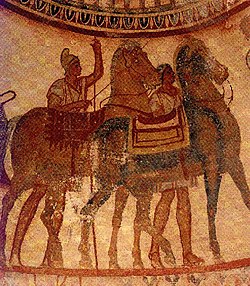
The Phrygian helmet, also known as the Thracian helmet, [2] was a type of helmet that originated in ancient Greece, towards the close of the classical period and was used throughout the Hellenistic world until well into the period of the Roman Republic. [3] [4] Widely used by Greek, Macedonian, Diadochi, Italic peoples, Etruscans, Thracian, Phrygian and Dacian warriors throughout the Hellenistic and Roman republican period and by some ethnicities into Roman imperial times. [5]







